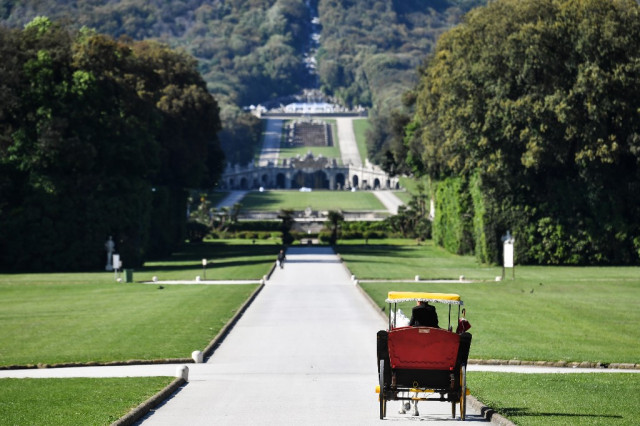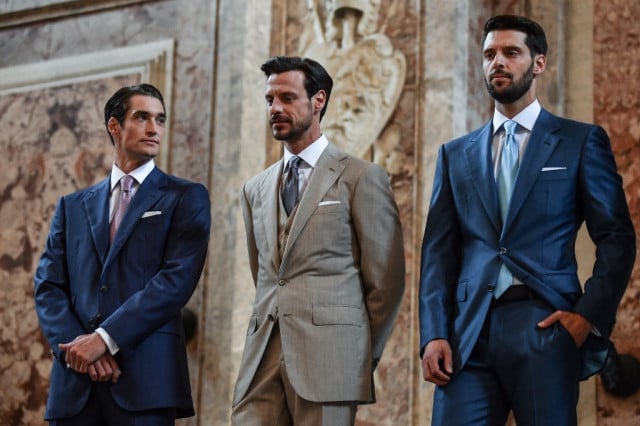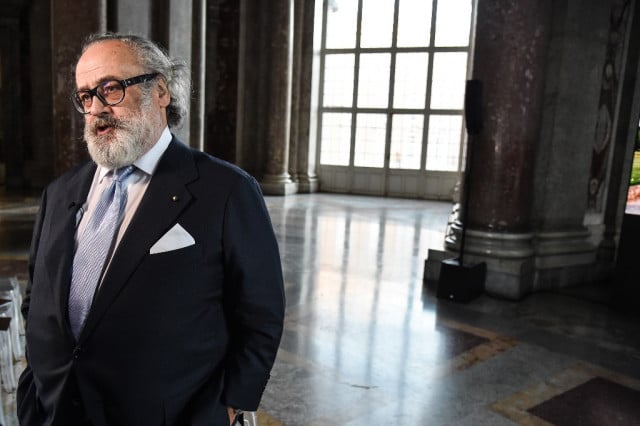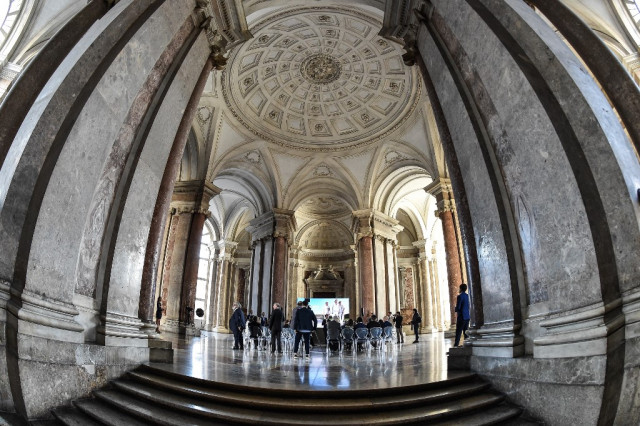Italian luxury clothing designer Stefano Ricci and his sons are touring the sumptuous Reggia di Caserta near Naples by horse-drawn carriage as they unveil their latest clothing collection.
The tour the vast gardens at sunset, stopping to sip champagne as models in impeccably-tailored suits in grain yellow, flaming red and galactic blue pose near an ancient fountain.

The grounds of the Reggia di Caserta palace near Naples. Photo: ANDREAS SOLARO / AFP
The decision to host an intimate preview of their Spring/Summer Collection 2020 at the UNESCO world heritage site, rather than during Milan's frenetic fashion week, is emblematic of a brand the New York Times dubs “Clothier to the 0.001 Percent”.
The Florence-based menswear and accessories brand, founded in 1972, has outfitted celebrities from Andrea Bocelli to Morgan Freeman and Tom Cruise, as well as world leaders like Nelson Mandela, and even Pope Francis.
The latest collection, which features pinstripe suits, colourful knitwear, field jackets and a tux, is named “King for a Day”.

Models wearing Ricci's creations. Photo: ANDREAS SOLARO / AFP
In an era where designer goods can be bought online or snapped up in outlets, Ricci says he offers the world's wealthiest men a personalised experience in buying Made in Italy items created using traditional Florentine sartorial techniques.
“Our customer still needs to experience the emotion, to touch the product. Have it explained to them in person, see the tailor, have his measurements taken, be told a story,” Niccolo Ricci, the company's CEO, told AFP at the preview this week.
“He wants to be pampered for an hour,” he said.
Collected by private plane
“Sometimes we have superstitious customers who want trousers, a suit, shirts for example for important appointments, and given the extremely tight deadlines they give us to deliver the clothes, they send their private plane to get them on time”.
Whether hankering after a 5,050 euro suede jacket or a 1,600 euro silk-and-crocodile baseball cap, the typical client is an “alpha-male”, preferably an outdoorsy type with “a love of antique art”, according to Stefano Ricci.

Stafano Ricci. Photo: AFP
“The Ricci man loves the mountains, the woods, dogs and – I'm not afraid to say it – hunting,” he said.
The bearded designer, 67, a keen hunter himself, says his passion for high-end tailoring is “a virus”.
“When it gets hold of you, you produce more, more, more, until you say 'what the heck can I invent now to better this?'”
His latest challenge? “Creating a material which has a compact structure but is at the same time extremely soft… and luminous, not like polished glass but like the skin of a beautiful young girl”.
“No price limit”
Focusing on the richest segment of society in emerging markets like Russia, China and the Middle East – the brand is about to open a shop in Turkmenistan – has shielded it from factors weighing on sales at other luxury houses.
“We've found there is no price limit if the customer finds himself with a quality product,” Niccolo Ricci said.
READ ALSO: The richest Florence families in 1427 are still rich today
“So even for a suit that costs 25,000 euros, if the customer understands the work that has been done on it, the quality of the fabric, our commitment to sourcing quality raw materials for our exclusive collections, then the customer is on board”.
The 2018 financial year closed with a turnover of 150 million, and the company registered a five percent growth in the first quarter of this year “despite difficulties such as the tariff war between the US and China, (and) Brexit or no Brexit”.

Photo: AFP
“I have been lucky enough to do something I love, to work with my wife, my family, and I've now passed the baton to my sons,” Stefano Ricci says as he stands at the top of a vast marble staircase leading to the royal apartments.
“I design the collections a bit, I give guidelines, I participate in the process, but I'm much more relaxed now”
Among the highlights of his career is a white silk vestment made for Pope Francis in 2015.
“I dressed the pope! I can't do better than that, it's the truth,” he laughs. “I couldn't hope for more”.
READ ALSO: The little-known tax rule that's got the super-rich flocking to Italy




 Please whitelist us to continue reading.
Please whitelist us to continue reading.
Member comments